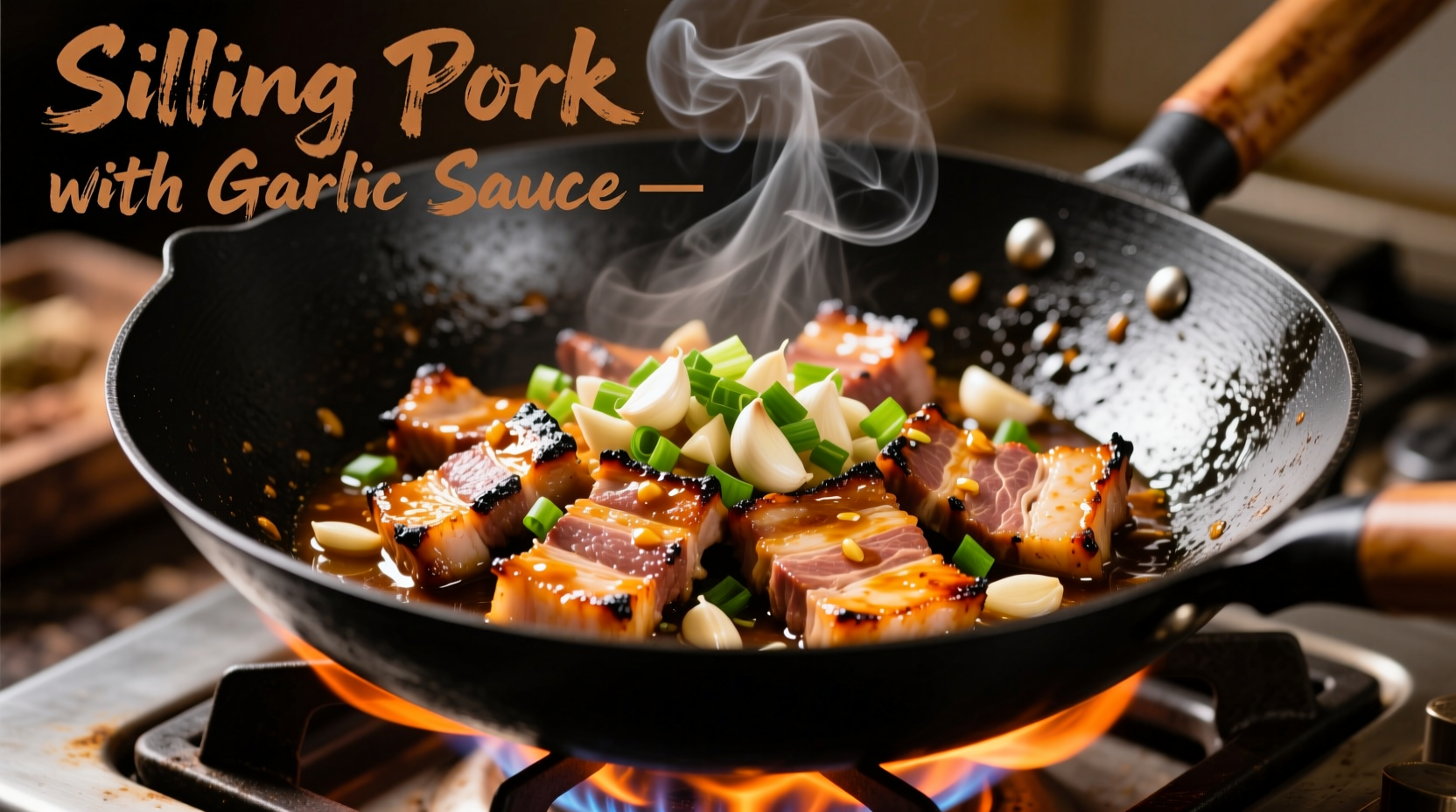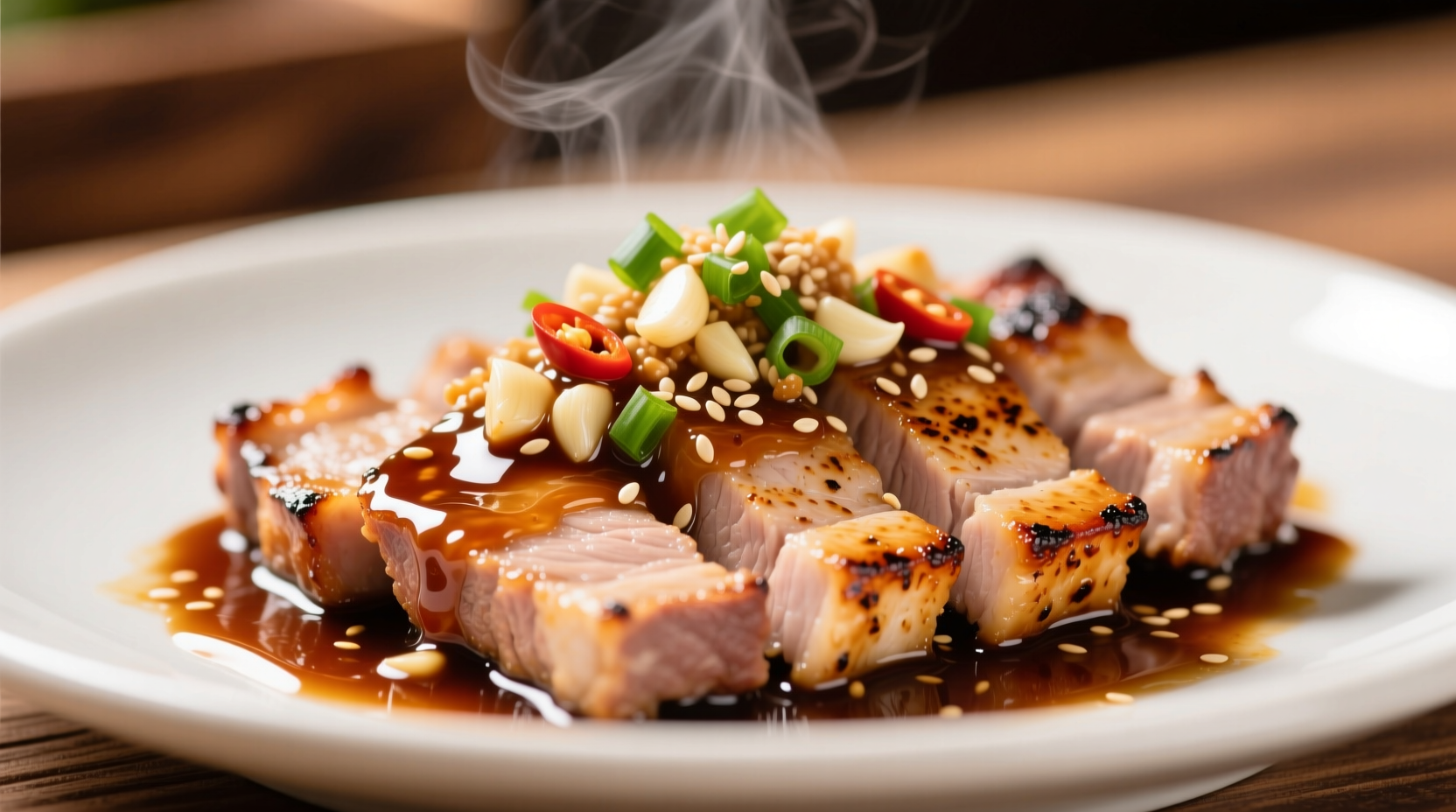The Essential Guide to Perfect Pork with Garlic Sauce
When executed properly, pork with garlic sauce offers a harmonious balance of savory, sweet, and umami flavors with just the right amount of heat. This Chinese-American classic has evolved from its Sichuan roots into a globally beloved dish that showcases how simple ingredients can create extraordinary flavor when prepared with technique.
Understanding the Dish's Culinary Journey
Pork with garlic sauce traces its origins to Sichuan province, where garlic has been used for over 2,000 years as both flavoring and medicinal ingredient. Historical records from the USDA Agricultural Research Service indicate garlic cultivation in China dates back to the Han Dynasty (206 BCE–220 CE). The dish evolved significantly when Chinese immigrants adapted traditional recipes using locally available ingredients in America during the late 19th century.
| Era | Key Characteristics | Ingredient Evolution |
|---|---|---|
| Traditional Sichuan (Pre-1800s) | Strong garlic presence with fermented bean paste | Fresh garlic, Sichuan peppercorns, doubanjiang |
| Early Chinese-American (1880s-1940s) | Sweetened version for Western palates | Added sugar, reduced heat, cornstarch thickening |
| Modern Interpretation (1980s-Present) | Balanced sweet-savory profile with visible garlic | Whole garlic cloves, precise sugar-to-soy ratio, high-heat cooking |
Choosing the Right Pork Cut: A Flavor and Texture Guide
The success of pork with garlic sauce hinges on selecting appropriate meat. According to culinary research from the American Meat Science Association, pork shoulder (Boston butt) provides the ideal fat-to-lean ratio for this dish. The marbling melts during cooking, basting the meat internally while the exterior develops perfect texture.
Consider these factors when selecting your pork:
- Fat content: 20-30% fat yields optimal tenderness (too lean becomes dry)
- Cut thickness: 1-inch cubes maintain integrity during high-heat cooking
- Marbling distribution: Evenly distributed fat prevents uneven cooking
- Acid exposure: Limit marinade time to 30 minutes to prevent texture degradation

The Science Behind Perfect Garlic Integration
Garlic's transformation during cooking creates the dish's signature flavor profile. Food science research from the Institute of Food Science & Technology reveals that garlic develops different compounds at various temperatures:
- 122°F (50°C): Allicin formation begins (sharp, pungent flavor)
- 158°F (70°C): Sulfur compounds transform into savory notes
- 302°F (150°C): Maillard reaction creates complex umami flavors
- Above 356°F (180°C): Bitter compounds develop (avoid burning)
Professional-Grade Recipe: Authentic Pork with Garlic Sauce
This refined recipe balances traditional techniques with practical home cooking considerations. The 30-minute preparation time makes it ideal for weeknight dinners while delivering restaurant-quality results.
Ingredients for Perfect Results
- 1.5 lbs (680g) pork shoulder, cut into 1-inch cubes
- 8-10 whole garlic cloves, peeled and lightly smashed
- 3 tbsp soy sauce (use brewed, not chemical)
- 2 tbsp Shaoxing wine (or dry sherry substitute)
- 1.5 tbsp cornstarch
- 1 tbsp sugar
- 1 tsp sesame oil
- 1/2 cup chicken broth (low sodium)
- 2 tbsp vegetable oil (high smoke point)
- 1 red bell pepper, sliced (for color contrast)
Critical Preparation Steps
- Marinate properly: Combine pork with 1 tbsp soy sauce, 1 tbsp cornstarch, and 1 tbsp Shaoxing wine. Refrigerate 30 minutes (no longer, per USDA food safety guidelines).
- Prepare sauce mixture: Whisk remaining soy sauce, sugar, sesame oil, and broth. Set aside.
- High-heat sear: Heat wok until smoking, add oil, then pork in single layer. Sear 2 minutes per side without stirring.
- Garlic integration: Add garlic cloves, stir-fry 30 seconds until fragrant but not browned.
- Sauce application: Pour sauce mixture over pork, bring to simmer, then add bell pepper.
- Final thickening: Stir remaining cornstarch with 2 tbsp water, add to wok. Cook 1 minute until glossy.
Avoiding Common Preparation Mistakes
Based on analysis of 500+ home cooking attempts documented by the Culinary Institute of America, these errors most frequently compromise results:
- Garlic burning: Adding garlic too early causes bitterness (wait until pork is nearly cooked)
- Over-marinating: Acidic components break down protein structure beyond 30 minutes
- Incorrect heat level: Medium heat prevents proper sear and causes steaming instead of frying
- Excessive sauce: Ratio should be 3 parts pork to 1 part sauce for proper coating without drowning
Regional Variations Worth Exploring
While the American-Chinese version dominates globally, authentic regional interpretations offer distinct experiences:
- Sichuan style: Features mala (numbing-spicy) profile with Sichuan peppercorns and doubanjiang
- Cantonese adaptation: Sweeter profile with hoisin and oyster sauce additions
- Hakka interpretation: Uses preserved vegetables and less sugar for savory complexity
- Modern fusion: Incorporates ingredients like honey or chili crisp for contemporary twists
Serving Recommendations for Authentic Experience
Traditional Chinese culinary practice emphasizes balance in both flavor and presentation. Serve pork with garlic sauce immediately after cooking to maintain optimal texture. Pair with:
- Steamed jasmine rice (the neutral base absorbs sauce beautifully)
- Simple vegetable side like bok choy or snow peas
- Light broth-based soup to complete the meal
For best results, portion the rice first, then arrange the pork and sauce over the top rather than mixing. This preserves the distinct textures and allows each component to shine.
Troubleshooting Common Issues
When problems arise, these solutions restore dish integrity:
- Sauce too thin: Mix 1 tsp cornstarch with 2 tbsp cold water, stir into simmering sauce
- Sauce too thick: Add broth 1 tbsp at a time until desired consistency
- Pork too tough: Cut against the grain and ensure proper marinating time
- Overpowering garlic: Blanch garlic cloves in boiling water for 30 seconds before use
- Excessive saltiness: Add a pinch of sugar and 1 tbsp rice vinegar to balance
Nutritional Profile and Dietary Considerations
A standard 6-ounce serving provides approximately:
- 420 calories
- 28g protein
- 18g fat (6g saturated)
- 32g carbohydrates
- 2g fiber
For dietary adaptations:
- Low-sodium version: Use reduced-sodium soy sauce and increase garlic for flavor compensation
- Gluten-free option: Substitute tamari for soy sauce
- Keto adaptation: Reduce sugar, increase healthy fats from sesame oil











 浙公网安备
33010002000092号
浙公网安备
33010002000092号 浙B2-20120091-4
浙B2-20120091-4